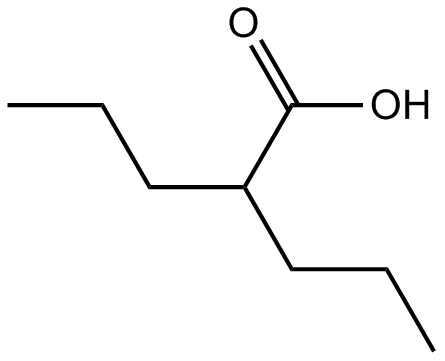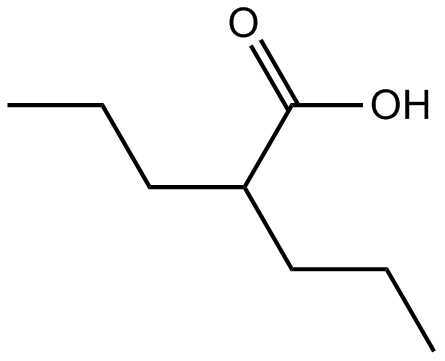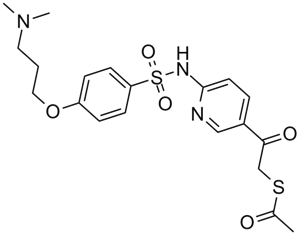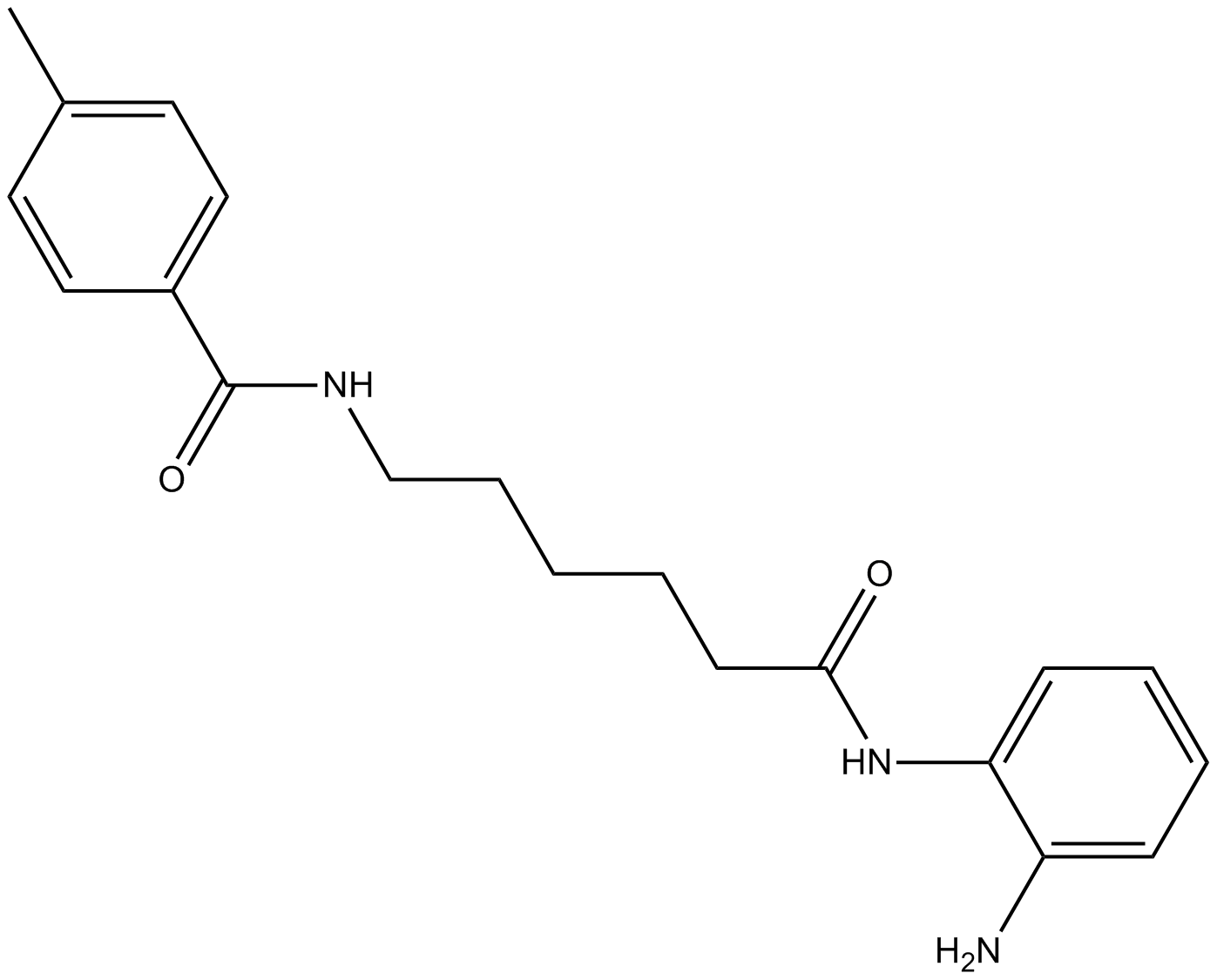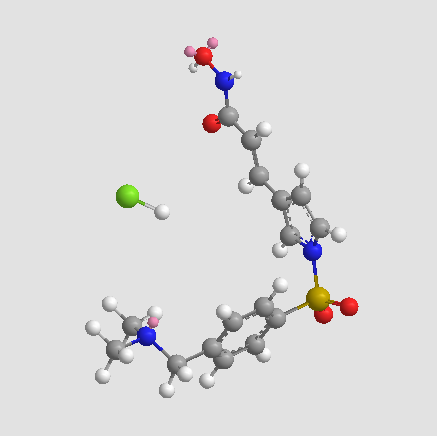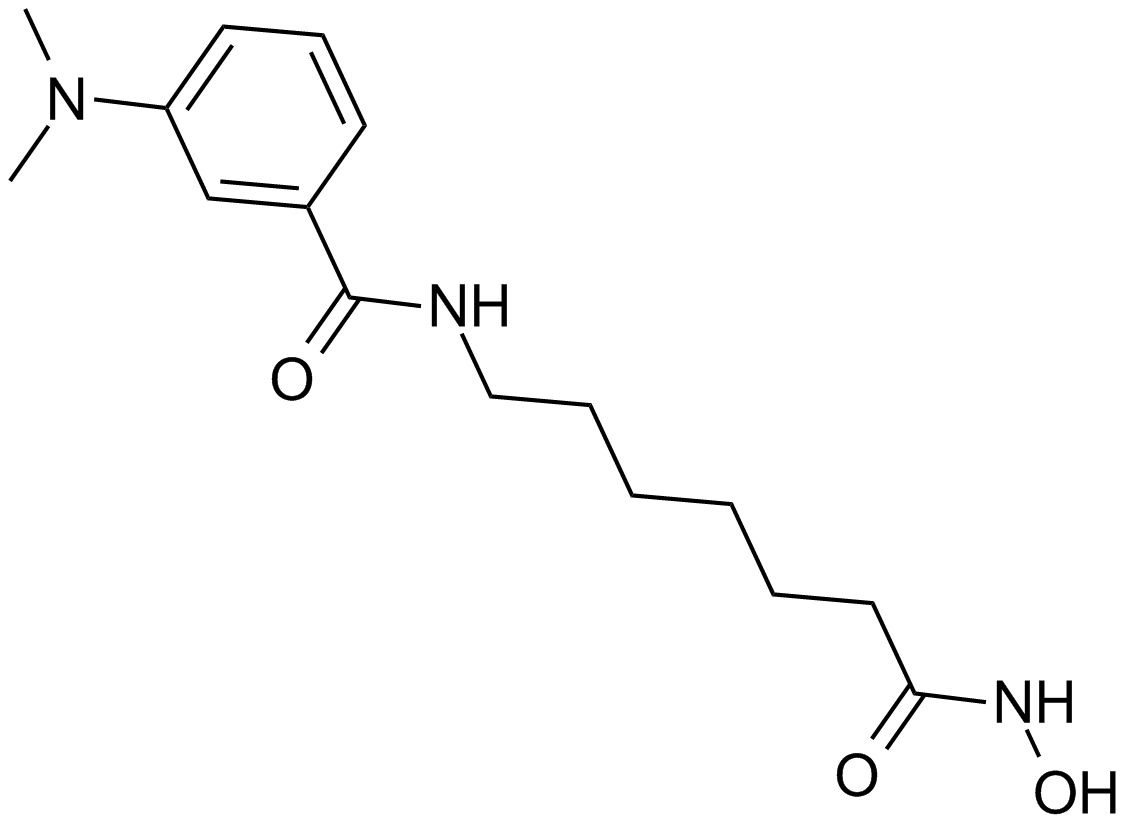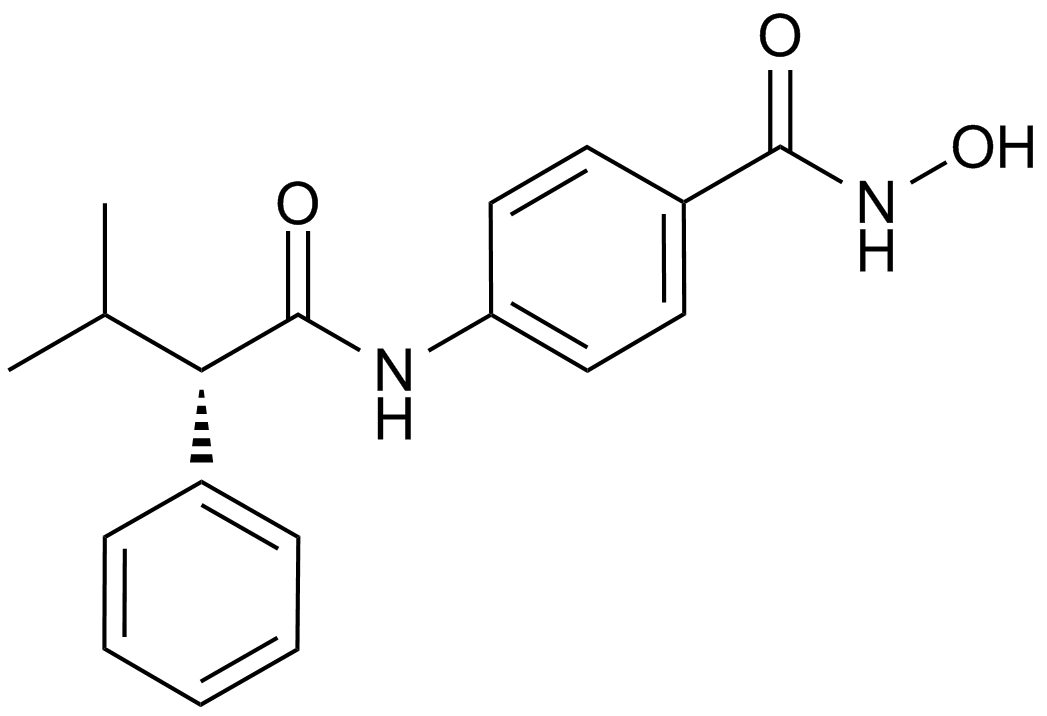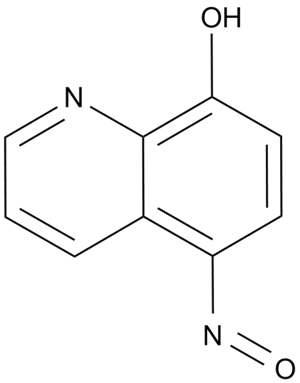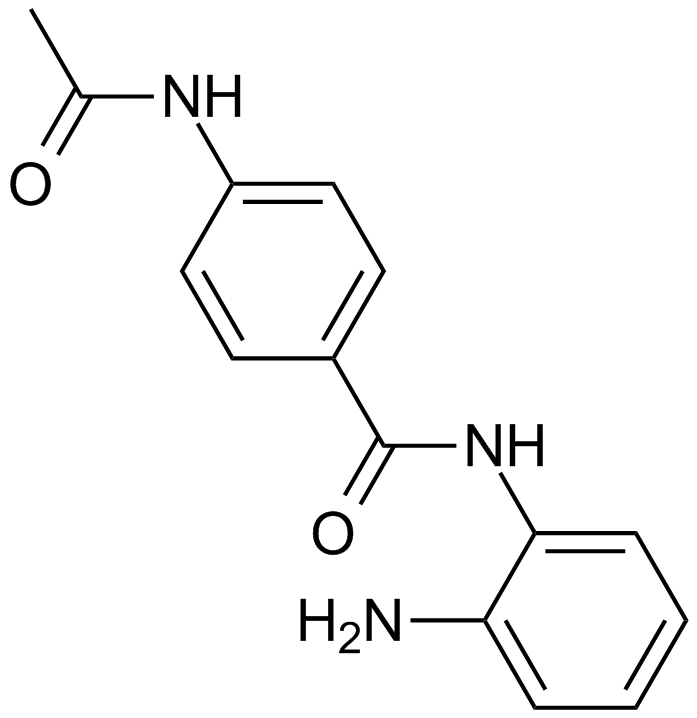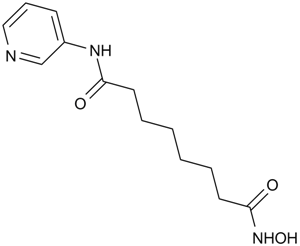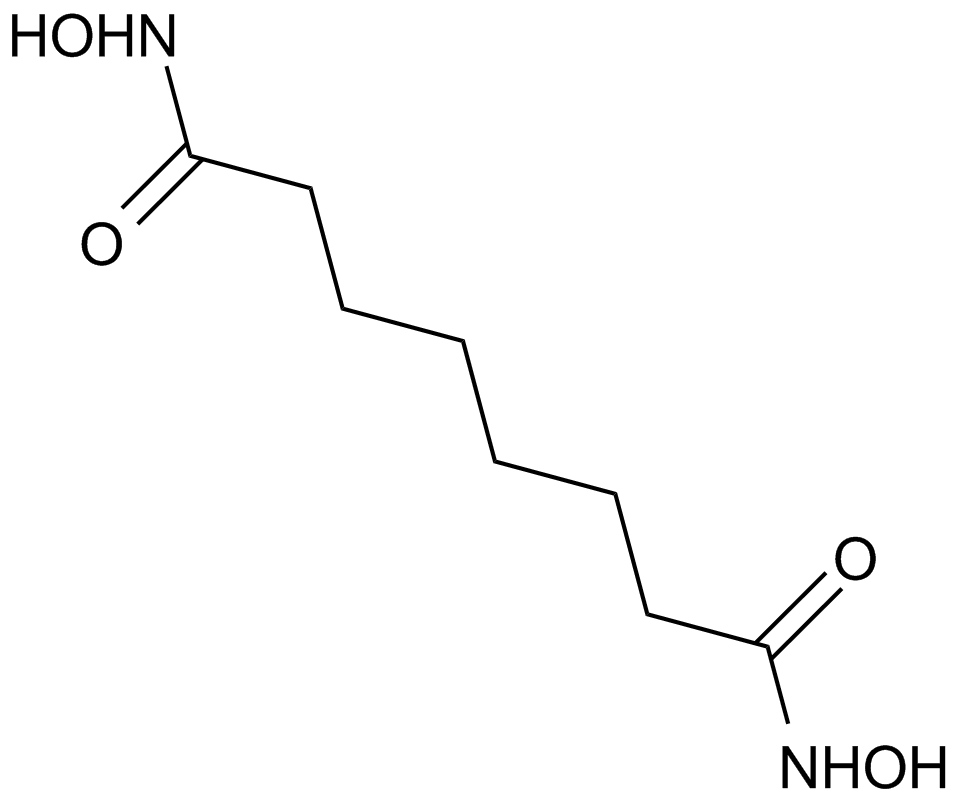Valproic acid
Valproic acid (CAS 99-66-1) is a branched short-chain fatty acid originally developed as an inert organic solvent, later identified for anticonvulsant properties in animal models. Mechanistically, valproic acid enhances levels of the inhibitory neurotransmitter gamma-aminobutyric acid (GABA) by increasing synthesis, inhibiting degradation, and blocking GABA transaminase activity. It also modulates neuronal excitability via inhibition of voltage-gated sodium, calcium, and potassium channels. Furthermore, valproic acid acts as a histone deacetylase (HDAC) inhibitor, targeting HDAC1 with an IC50 of approximately 0.4 mM. Due to HDAC inhibitory activity, it holds potential research interest for oncology applications.
- 1. Chuntuan Li, Shengquan Liu, et al. "Epigenetic activation of PTEN by valproic acid inhibits PI3K/AKT signaling and Burkitt lymphoma cell growth." Gene. 2025 May 20:950:149369. PMID: 40021103
- 2. Leah F Cabo, Liheng Yang, et al. "Toxoplasma gondii infection misdirects placental trophoblast lineage specification." bioRxiv. 2024 Sep 12:2024.09.10.612241 PMID: 39314453
- 3. Anjali Sharma, Nirnath Sah, et al. "Development of a novel glucose-dendrimer based therapeutic targeting hyperexcitable neurons in neurological disorders." Bioengineering & Translational MEdicine. Volume9, Issue5 September 2024 e10655
- 4. Rafaela J da Silva, Leah F Cabo, et al. "The trophoblast surface becomes refractory to adhesion by congenitally transmitted Toxoplasma gondii and Listeria monocytogenes during cytotrophoblast to." mSphere. 2024 Jun 25;9(6):e0074823. PMID: 38771057
- 5. Rafaela J da Silva, Leah F Cabo, et al. "Human trophoblast stem cells can be used to model placental susceptibility to Toxoplasma gondii and highlight the critical importance of the trophoblast cell surface in pathogen resistance." bioRxiv. 2023 Nov 11:2023.11.10.566663. PMID: 37986837
- 6. KE PENG, AIQIN SUN, et al. "Restoration of the ATG5‑dependent autophagy sensitizes DU145 prostate cancer cells to chemotherapeutic drugs." Oncol Lett. 2021 Sep;22(3):638. PMID:34386060
| Storage | Store at -20°C |
| M.Wt | 144.21 |
| Cas No. | 99-66-1 |
| Formula | C8H16O2 |
| Solubility | ≥12.35 mg/mL in DMSO; ≥29 mg/mL in EtOH; ≥36 mg/mL in H2O |
| Chemical Name | 2-propylpentanoic acid |
| SDF | Download SDF |
| Canonical SMILES | CCCC(CCC)C(O)=O |
| Shipping Condition | Small Molecules with Blue Ice, Modified Nucleotides with Dry Ice. |
| General tips | We do not recommend long-term storage for the solution, please use it up soon. |
| Kinase experiment [1]: | |
|
In vitro Kinase assays |
For in vitro HDAC assays, myc epitope-tagged HDAC1 was transfected into HeLa cells and immunoprecipitated. Immunoprecipitates were washed, resuspended in HD buffer (20 mM Tris-HCl, pH 8.0, 150 mM NaCl, 10% glycerol), and stored as frozen aliquots. HDAC1 was then added to a tube containing 40,000 cpm 3H-labeled acetylated histones (purified from HeLa cells) in 200 μl of HD buffer ±valproic acid,. After rotation for 2 h at 37 °C, the reaction was stopped by the addition of 50 μl of stop solution and released 3H-labeled acetic acid was extracted and analyzed by scintillation counting. |
| Cell experiment [1, 2]: | |
|
Cell lines |
Neuro2A cells, human ovarian cancer cell line SKOV3 |
|
Preparation method |
Soluble in DMSO. General tips for obtaining a higher concentration: Please warm the tube at 37℃ for 10 minutes and/or shake it in the ultrasonic bath for a while. Stock solution can be stored below -20℃ for several months. |
|
Reacting condition |
0.5–5 mM for 24 h; or 4 mM for 48 h |
|
Applications |
Valproic acid induced hyperacetylation of endogenous histones and inhibited nuclear HDAC activity in Neuro2A cells. Moreover, valproic acid inhibited cell proliferation, and induced apoptosis of SKOV3 cells in a dose- and time- dependent manner. |
| Animal experiment [2, 3]: | |
|
Animal models |
human ovarian cancer model transplanted subcutaneously in nude mice |
|
Dosage form |
500mg/kg/day, intraperitoneal injection, for 30 days |
|
Applications |
Valproic acid induced growth inhibition of human ovarian cancer transplanted subcutaneously in nude mice. Moreover, valproic acid (50 mg/kg, IV infusion) decreased pro-inflammatory cytokine gene expression in a canine endotoxemia model in vivo. |
|
Other notes |
Please test the solubility of all compounds indoor, and the actual solubility may slightly differ with the theoretical value. This is caused by an experimental system error and it is normal. |
|
References: 1. Phiel, C. J., Zhang, F., Huang, E. Y., Guenther, M. G., Lazar, M. A. and Klein, P. S. (2001) Histone deacetylase is a direct target of valproic acid, a potent anticonvulsant, mood stabilizer, and teratogen. J Biol Chem. 276, 36734-36741 2. Shan, Z., Feng-Nian, R., Jie, G. and Ting, Z. (2012) Effects of valproic acid on proliferation, apoptosis, angiogenesis and metastasis of ovarian cancer in vitro and in vivo. Asian Pac J Cancer Prev. 13, 3977-3982 3. Song, R., Yu, D., Yoon, J. and Park, J. (2015) Valproic acid attenuates the expression of pro-inflammatory cytokines lipopolysaccharide-treated canine peripheral blood mononuclear cells (in vitro) and in a canine endotoxemia model (in vivo). Vet Immunol Immunopathol. 166, 132-137 |
|
Quality Control & MSDS
- View current batch:
Chemical structure
